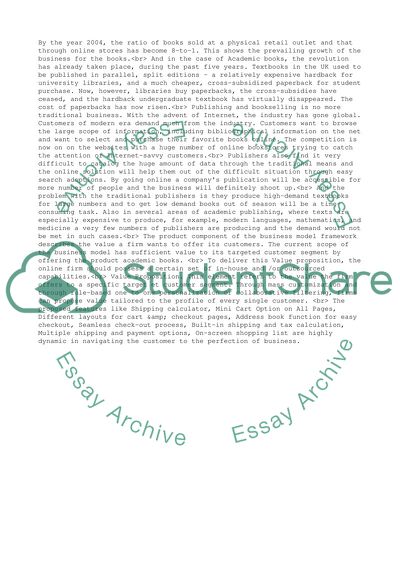Cite this document
(“Online Academic Book store Assignment Example | Topics and Well Written Essays - 2500 words”, n.d.)
Online Academic Book store Assignment Example | Topics and Well Written Essays - 2500 words. Retrieved from https://studentshare.org/business/1502718-online-academic-book-store
Online Academic Book store Assignment Example | Topics and Well Written Essays - 2500 words. Retrieved from https://studentshare.org/business/1502718-online-academic-book-store
(Online Academic Book Store Assignment Example | Topics and Well Written Essays - 2500 Words)
Online Academic Book Store Assignment Example | Topics and Well Written Essays - 2500 Words. https://studentshare.org/business/1502718-online-academic-book-store.
Online Academic Book Store Assignment Example | Topics and Well Written Essays - 2500 Words. https://studentshare.org/business/1502718-online-academic-book-store.
“Online Academic Book Store Assignment Example | Topics and Well Written Essays - 2500 Words”, n.d. https://studentshare.org/business/1502718-online-academic-book-store.


